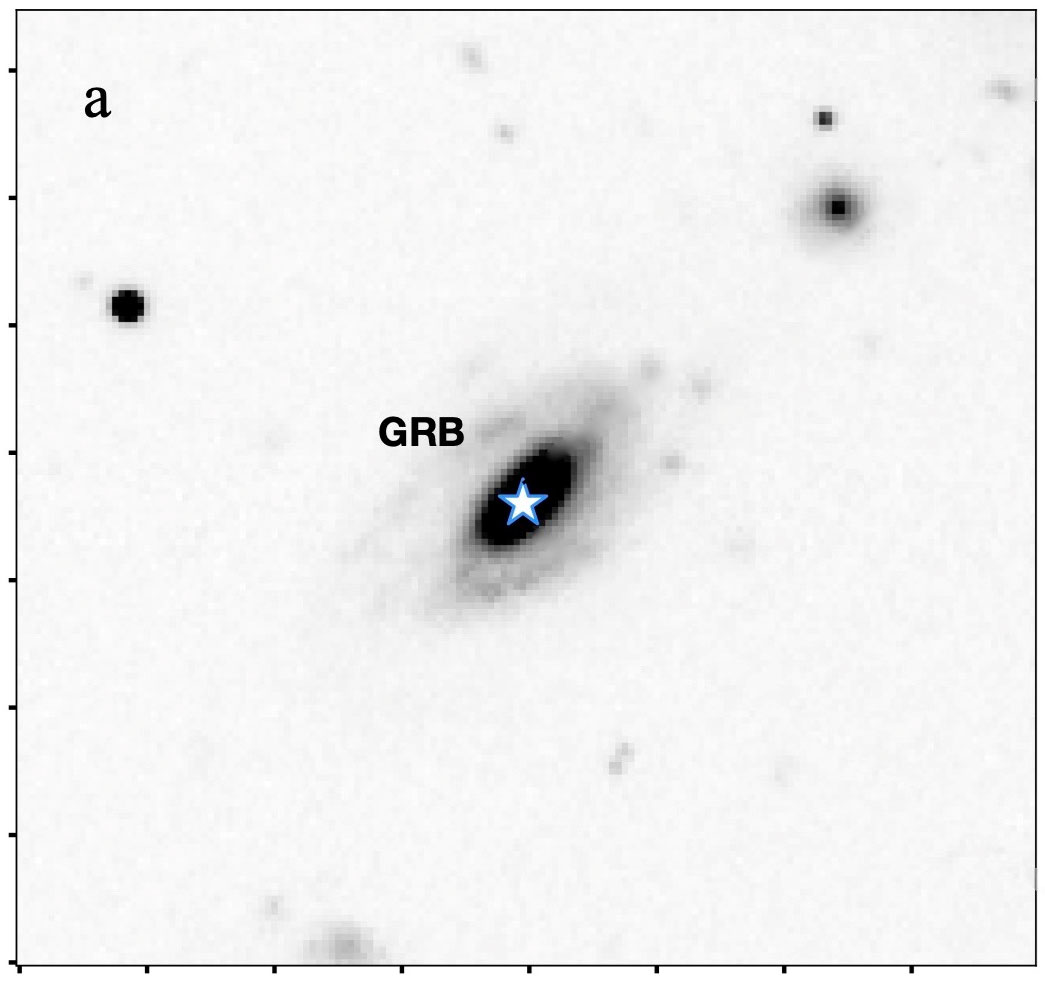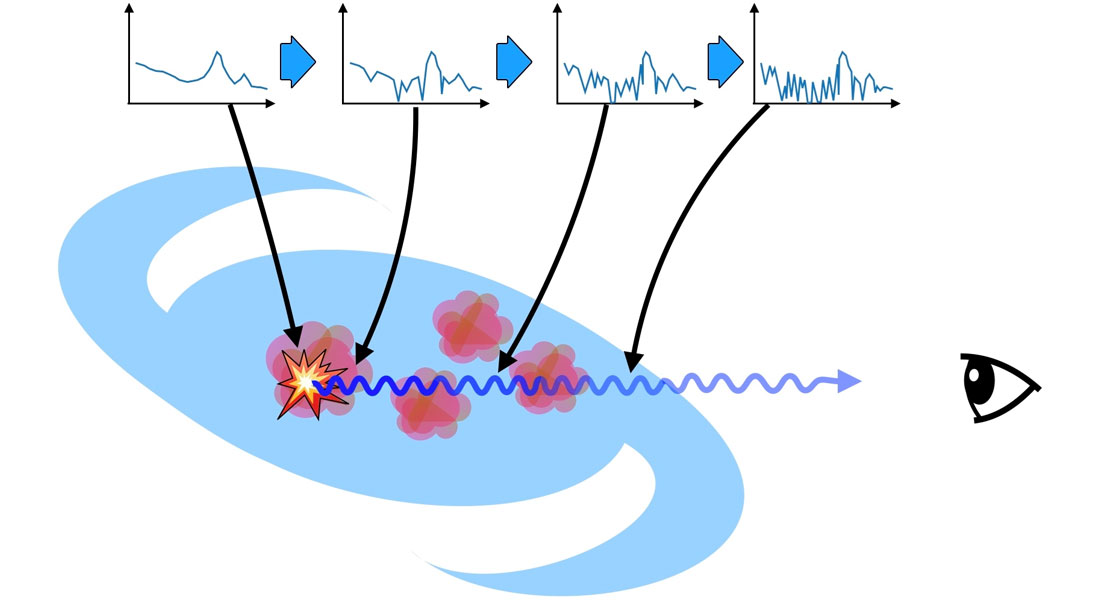A novel way of investigating star-forming gas in the early Universe
Combining observations of exploding stars and observations of galaxies, astronomers at the Cosmic Dawn Center have found a novel way to estimate the amount of the otherwise invisible, cold gas in some of the first galaxies — gas that will eventually condense and start forming stars.

In order for a galaxy to form stars, it must contain a sufficient amount of cold gas — if the gas is not cold, it cannot clump together enough to collapse into stars. Investigating whether or not a galaxy is able to form stars therefore means looking for the cold, neutral gas, the largest component of which by far is neutral hydrogen.
However, neutral hydrogen atoms are generally quite difficult to detect at large distances and hence — because large distance mean looking further back in time — to early epochs in the history of the Universe.
For individual galaxies, with available technology we can detect atomic hydrogen back to when the Universe was around 9 billion years, 2/3 of its current age. Observing the combined light from large ensembles of galaxies, we can look somewhat farther, back to when the Universe was 6 billion years old. Of course, this comes at the price of only being able to probe galaxies in a statistical sense, since we lose information of the individual galaxies.
Hydrogen by proxy
Similar limitations are found for molecular hydrogen. The workaround for this problem has been to find a suitable "tracer" — that is, emission from another molecule that represents the same gas phase, but is much brighter and hence detectable to larger distances.
A popular choice, which has been used with great success as such a tracer for the total molecular gas component, has traditionally been carbon monoxide (CO). The downside to this solution, however, is that the exact factor used to convert the observed carbon to the desired hydrogen is somewhat uncertain, depending on several external features.
But in a new study based on exploding stars, DAWN postdoc Kasper E. Heinz and collaborators, most of which are co-DAWNers, now propose a similar tracer for atomic hydrogen.
Cosmic explosions
The most massive stars end their lives in magnificent explosions, temporarily outshining their host galaxy completely, making them visible across most of the observable Universe. The most violent of these are the so-called gamma-ray bursts, heralding the death of a star over 30 times more massive than our Sun collapsing and forming a black hole.
Gamma-ray bursts typically occur in the centers of their host galaxies. For a brief moment, they therefore illuminate the gas, dust and metals in these galaxies, providing a cosmic lighthouse that reveals the galaxy’s constituents.

Similar to the approach for the molecular hydrogen, Kasper E. Heintz and his collaborators were able to find a useful tracer of the atomic neutral hydrogen gas. This tracer is ionized carbon, i.e. carbon atoms that have lost one of their electrons. The carbon ions are excited by the light of the bright background gamma-ray burst, and the intervening gas thereby leaves a unique absorption fingerprint in its spectrum.
Based on observations of gamma-ray bursts with the Very Large Telescope in Chile, the team could accurately measure the abundance of carbon ion in this excited state, which will eventually decay and produce strongly emitting light. Comparing this to the atomic hydrogen abundance, they could directly infer the amount of neutral atomic gas that is associated with ionized carbon.
In other words, Heintz and his coauthors have demonstrated how you can infer the amount of the elusive neutral hydrogen, based on observations of the more tractable carbon.
Gas in distant galaxies
Using this accurate calibration, the team collected a large set of observations taken with the Atacama Large Millimeter Array of galaxies emitting the same particular transition of ionized carbon. Measuring the total amount of light produced from this transition, they could then infer the corresponding absolute atomic gas reservoir of the galaxy — even for galaxies as far back in time as some 13 billion years, when the Universe was less than 10% of its current age.
This work provides the first insight into the invisible, neutral gas components of galaxies in the distant universe, results that will greatly contribute to our overall census of galaxy formation and evolution.
- The results have just been published in the Astrophysical Journal: Heintz et al. 2021, "Measuring the H i Content of Individual Galaxies Out to the Epoch of Reionization with [C II]"
